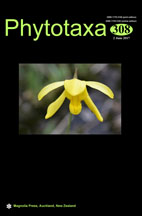Abstract
Within the framework of the preparation of the treatment of the family Dipterocarpaceae for the Flore d’Afrique Centrale, the revision of the genus Monotes in D.R. Congo is presented, including a discussion on its distinction from the closely related genus Marquesia. Monotes has suffered from taxonomic inflation. A much more synthetic treatment than earlier revisions is here proposed, with 15 new synonyms and seven species or subspecies downgraded to varietal rank. Twenty-seven taxa are accepted in D.R. Congo (13 species, 10 varieties and four forms), of which six are new to the flora of the country. One new species (Monotes duvigneaudii), one new subspecies (Monotes rubriglans subsp. upembensis) and three new varieties are described (Monotes dasyanthus var. heterotrichus, M. duvigneaudii var. concolor, M. rubriglans subsp. upembensis var. griseocoriaceus). Eleven new combinations are made. Monotes hypoleucus is extended, to include var. angolensis, var. caloneurus, var. discolor, var. hypoleucus, and var. loandensis. Lectotypes are designated for M. adenophyllus var. homblei, M. dasyanthus var. dasyanthus forma sericea, M. dasyanthus var. mutetetwa, M. dawei, M. glaber, M. hirtii, M. hypoleucus, M. hypoleucus var. angolensis, M. hypoleucus var. caloneurus, M. kapiriensis, M. katangensis, M. magnificus var. albidus, M. magnificus var. paucipilosus, and M. schmitzii. Four supposed Angolan endemics (M. carrissoanus, M. dawei, M. hutchinsonianus, M. noldeae) and one supposed Congolian endemic (M. schmitzii) are refuted as forms without taxonomic standing. Another three are no longer endemic to Angola because of material collected in D.R. Congo (M. hypoleucus var. loandensis, M. pearsonii, M. rubriglans). In the current state of knowledge, eight taxa are endemic to D.R. Congo (Monotes doryphorus, M. duvigneaudii var. duvigneaudii, M. duvigneaudii var. concolor, M. hirtii, M. hypoleucus var. angolensis f. oxyphyllinus, M. magnificus var. gigantophyllus, M. rubriglans subsp. upembensis var. upembensis and M. rubriglans subsp. upembensis var. griseocoriaceus). The Upper Katanga region appears to represent the most prominent centre of diversity for the genus. Additional field work and collecting is necessary to complete the description of several taxa.

